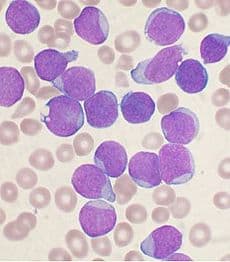A new analysis has found that among patients with chronic lymphocytic leukemia, African Americans more commonly present with advanced disease, and they tend to have shorter survival times than Caucasians despite receiving the same care.
Published early online in CANCER, a peer-reviewed journal of the American Cancer Society, the results suggest that biological factors may account for some racial disparities in cancer survival.
Among cancer patients, minorities tend to have a worse prognosis than Caucasians for reasons that are unclear. In African American patients, lower socioeconomic status and limited access to high-quality care often can play a role, but some researchers propose that certain cancers can behave more aggressively in minority individuals, which also can lead to worse outcomes.
Because chronic lymphocytic leukemia (CLL), a type of blood cancer, is rare in African Americans, investigators from The University of Texas MD Anderson Cancer Center in Houston and the Duke University Medical Center in Durham led a study that combined the two centers’ experiences with African American and Caucasian patients. Their analysis included 84 African American patients and 1,571 non-black patients referred to the two centers. All patients, regardless of race, had access to healthcare services and received the same treatments. “We sought to isolate race as a prognostic factor from other known demographic and clinical prognostic parameters in CLL,” explained Dr. Falchi.
The investigators found that while the time from diagnosis (made either incidentally or because of clinical symptoms) to referral was shorter for African Americans than Caucasian patients, African Americans were more likely to have CLL that was more advanced at the time of referral. Also, although African Americans responded as well to first-line therapy as Caucasian patients, their cancer progressed more rapidly and their survival was shorter. The inferior survival of African American patients persisted when patients were grouped according to factors related to the severity of their disease.
“These findings suggest that while inducing similarly high response rates, standard treatments do not overcome racial differences in outcome among patients with CLL,” said Dr. Ferrajoli. She added that a number of questions remain unanswered. For example, do distinct biologic characteristics of African American patients with CLL account for the disparities seen in this study? And will these findings hold in the general population, where the impact of socioeconomic status may be more varied?
In an accompanying editorial, Christopher Flowers, MD, of Emory University in Atlanta, and Barbara Pro, MD, of Thomas Jefferson University in Philadelphia, noted that to adequately study disparities in leukemia, investigators will need to collect specimens and clinical data from patients to examine the potential impact of molecular and biologic markers. “Future studies in CLL can use this work as a cornerstone for investigating racial disparities in this disease,” they wrote.


